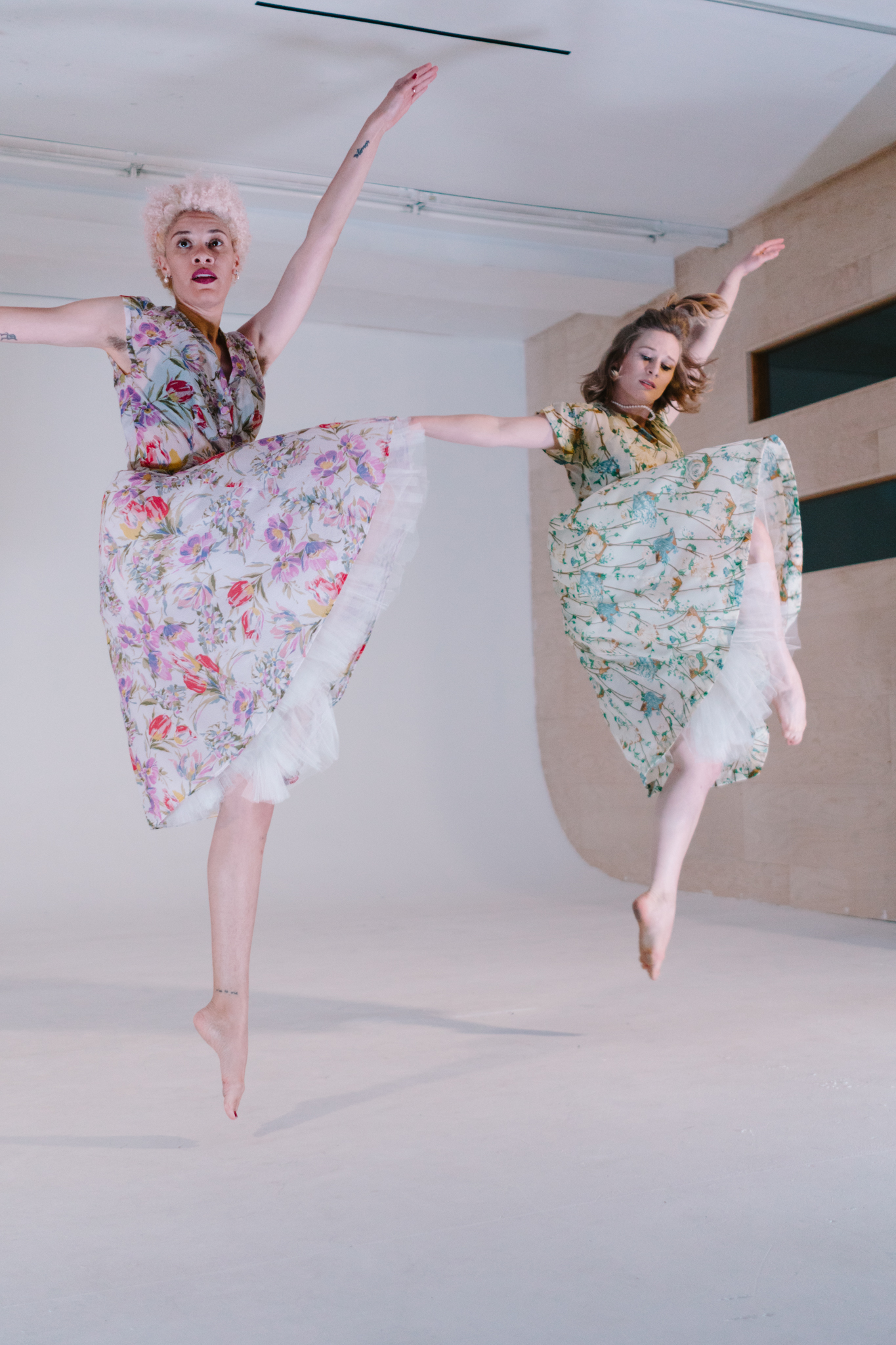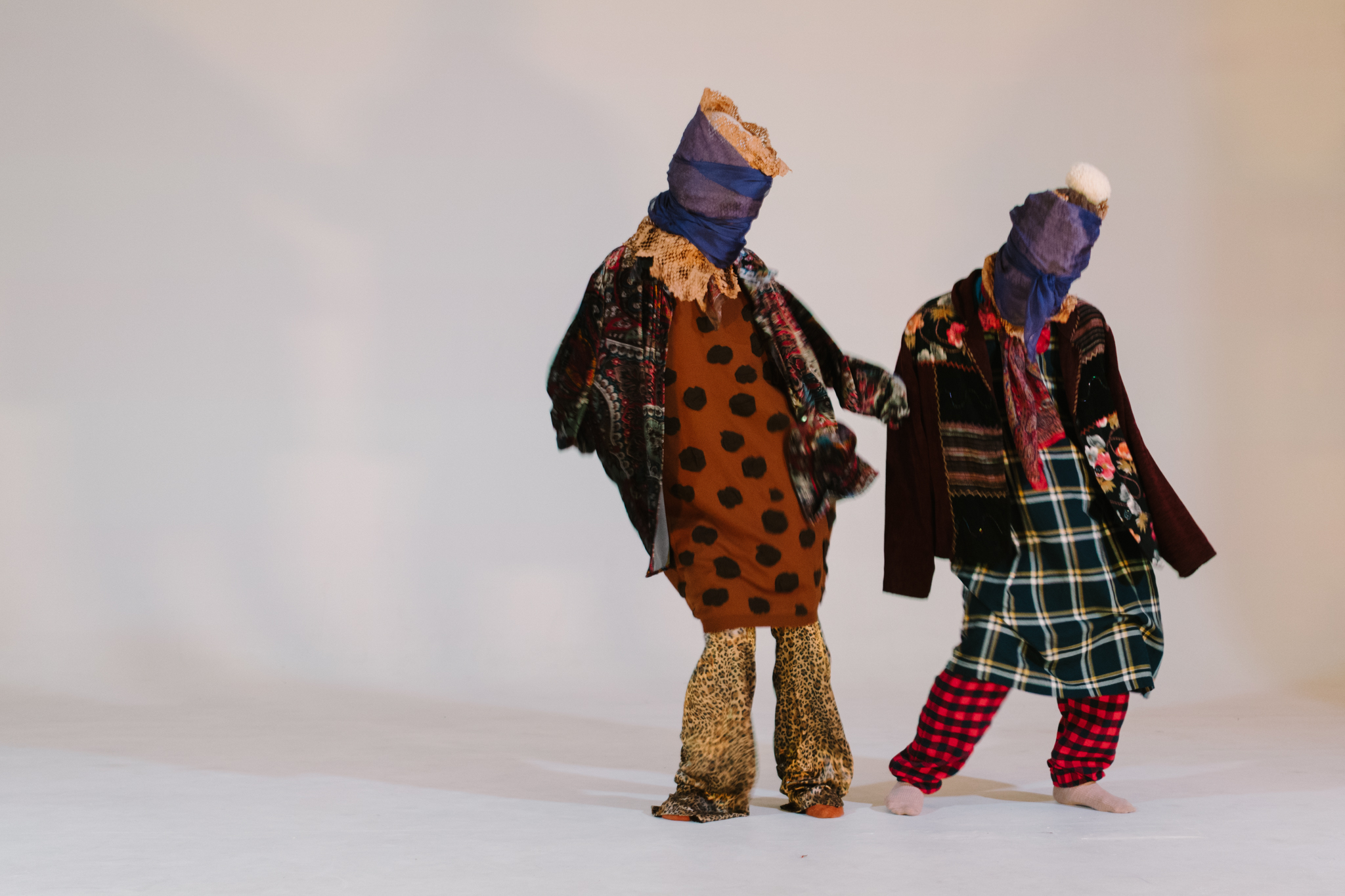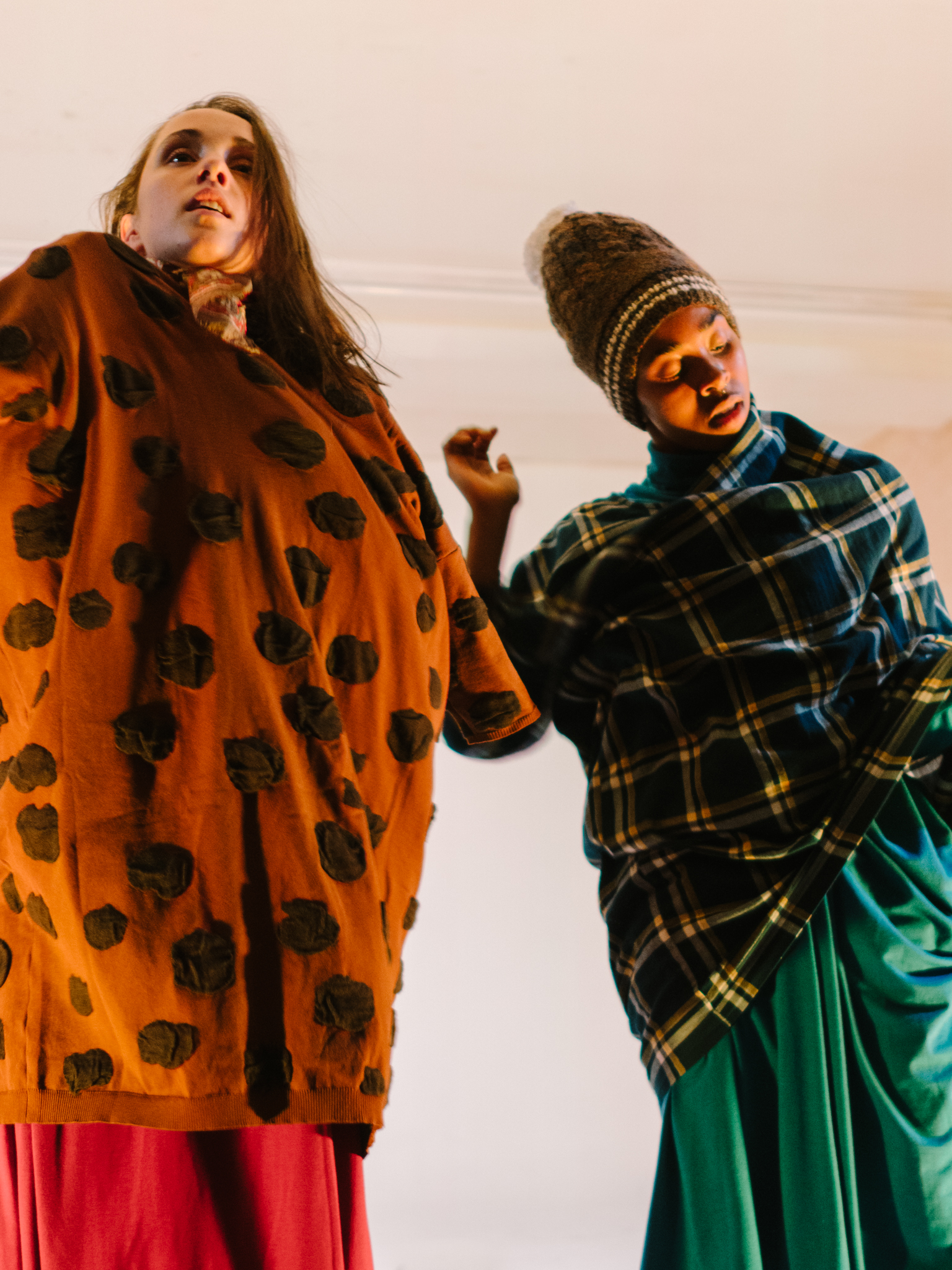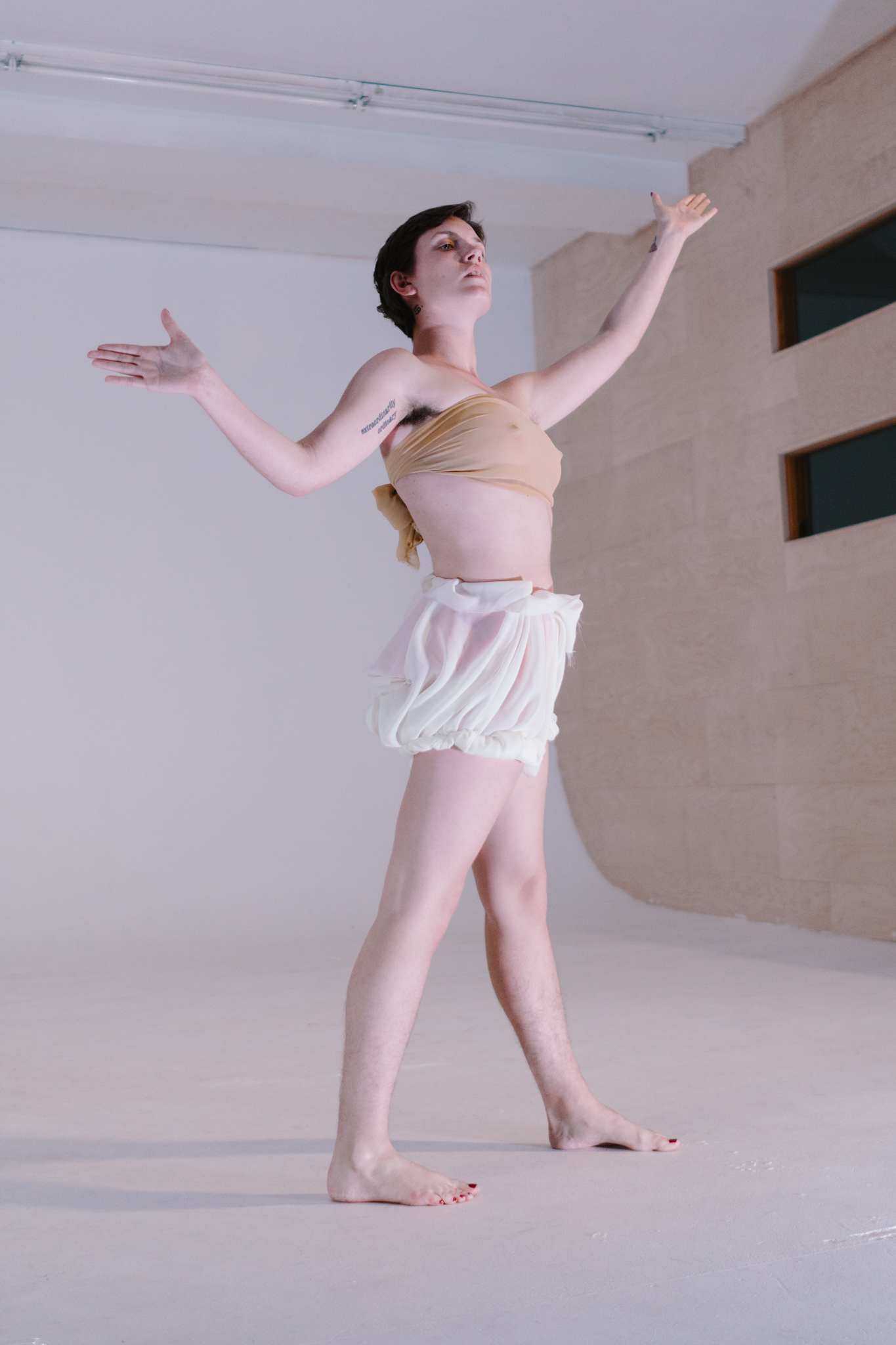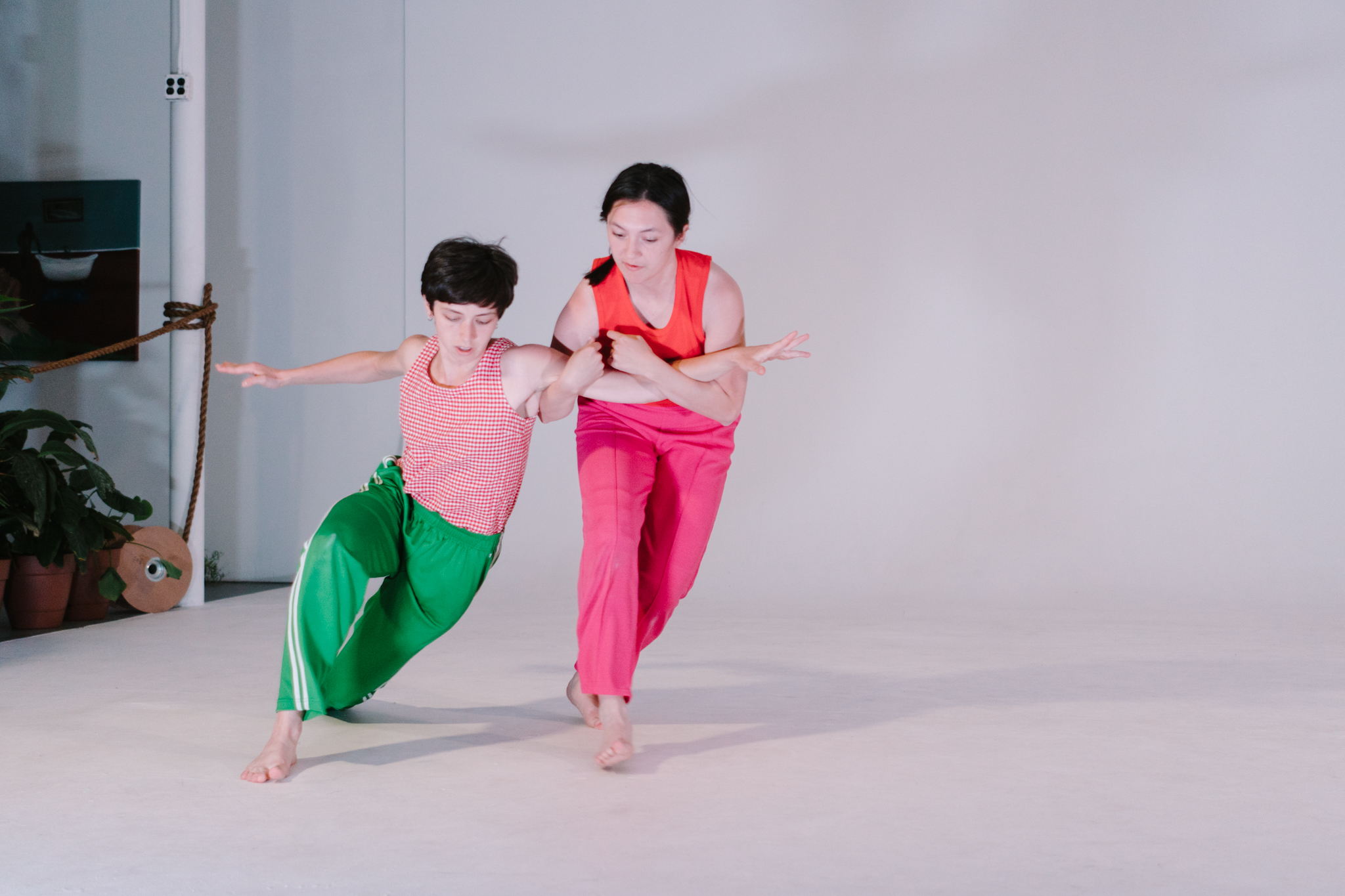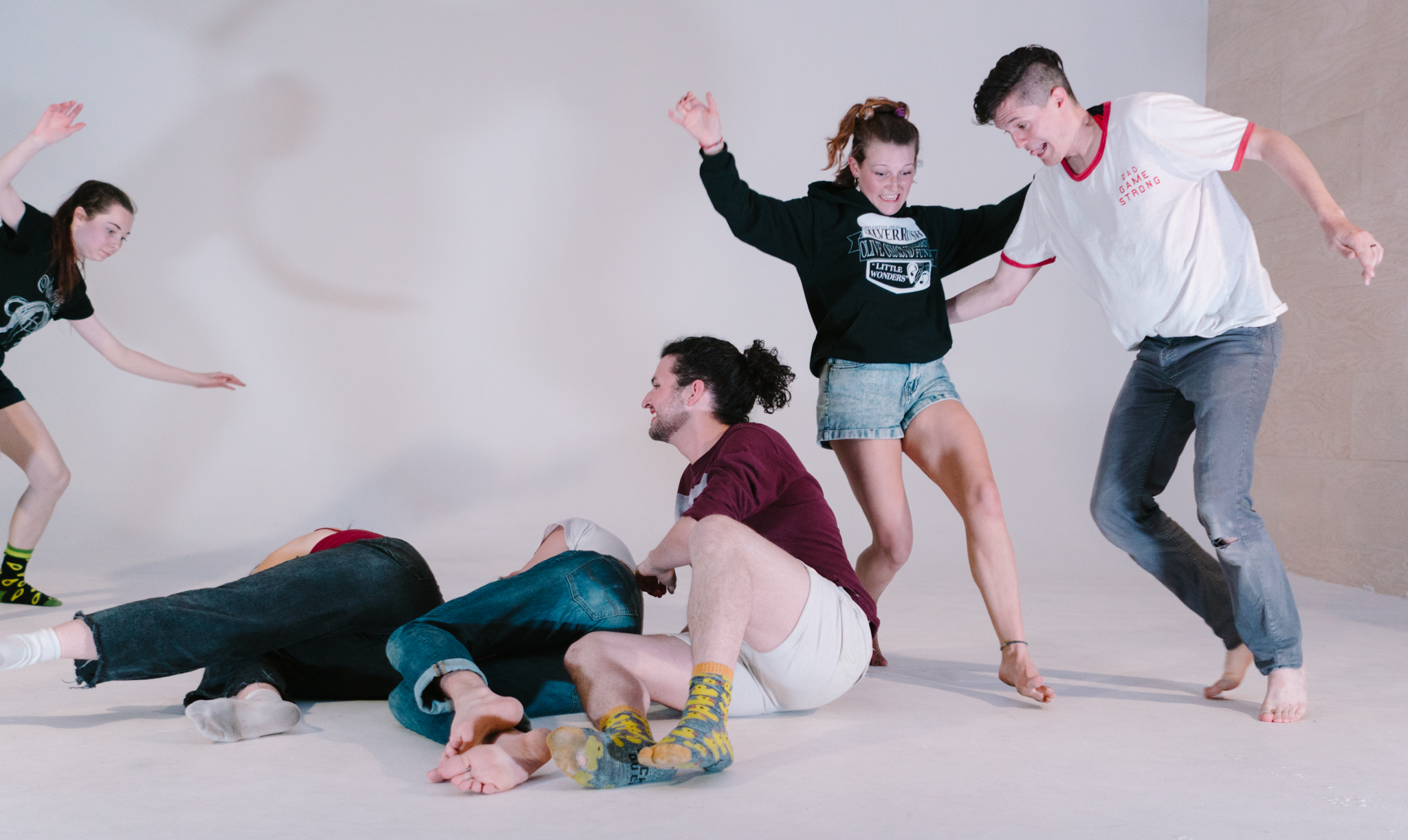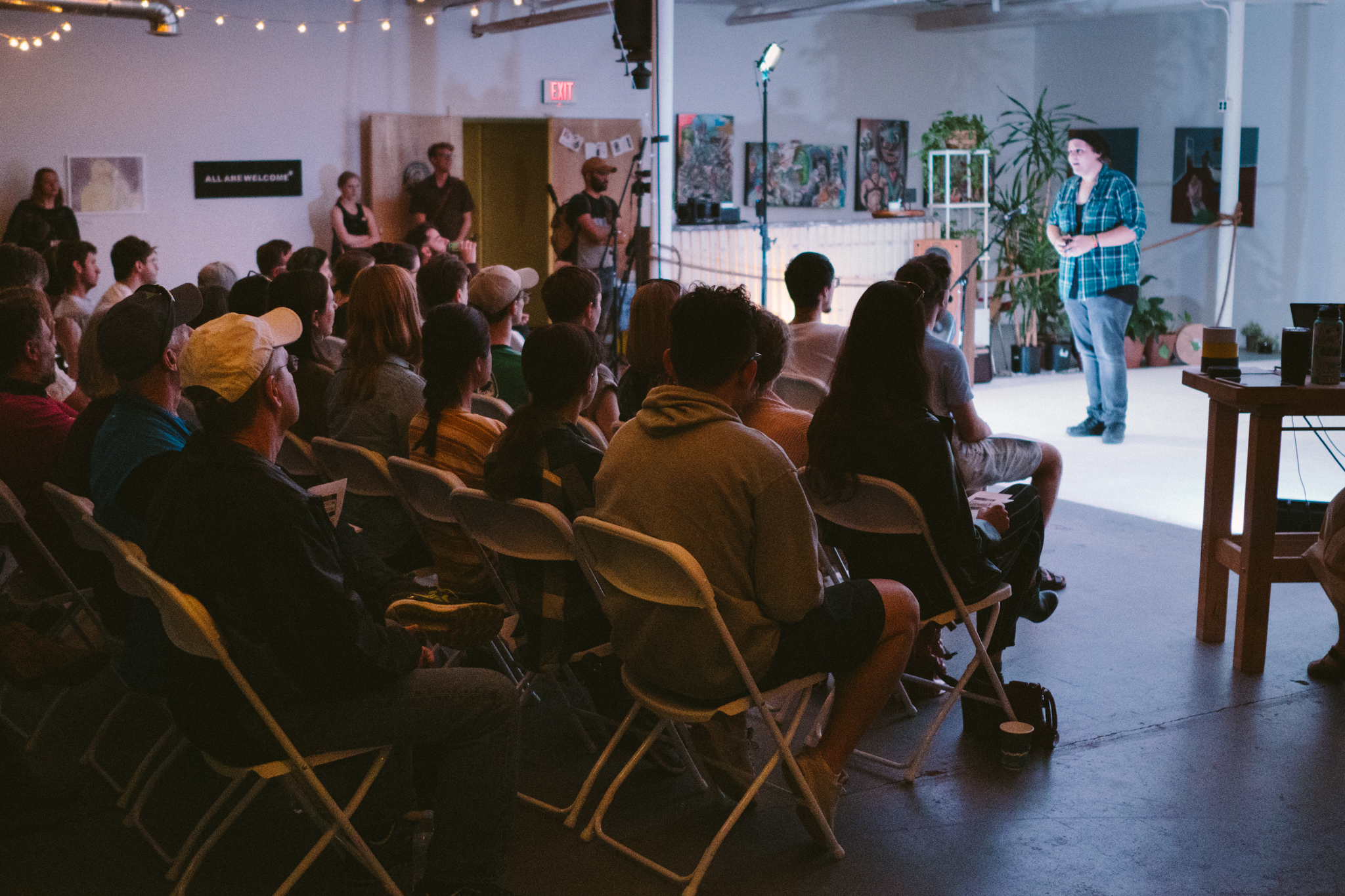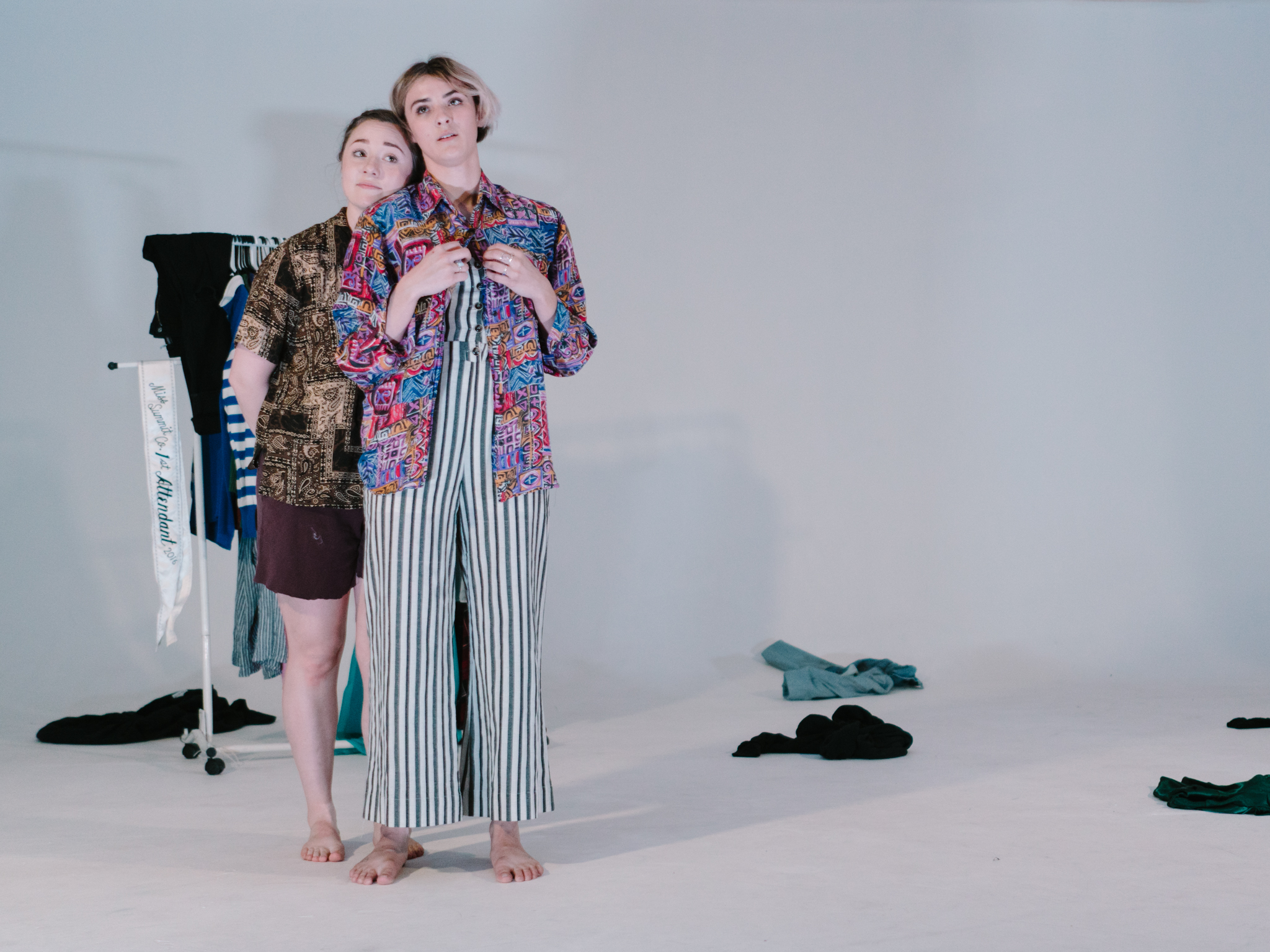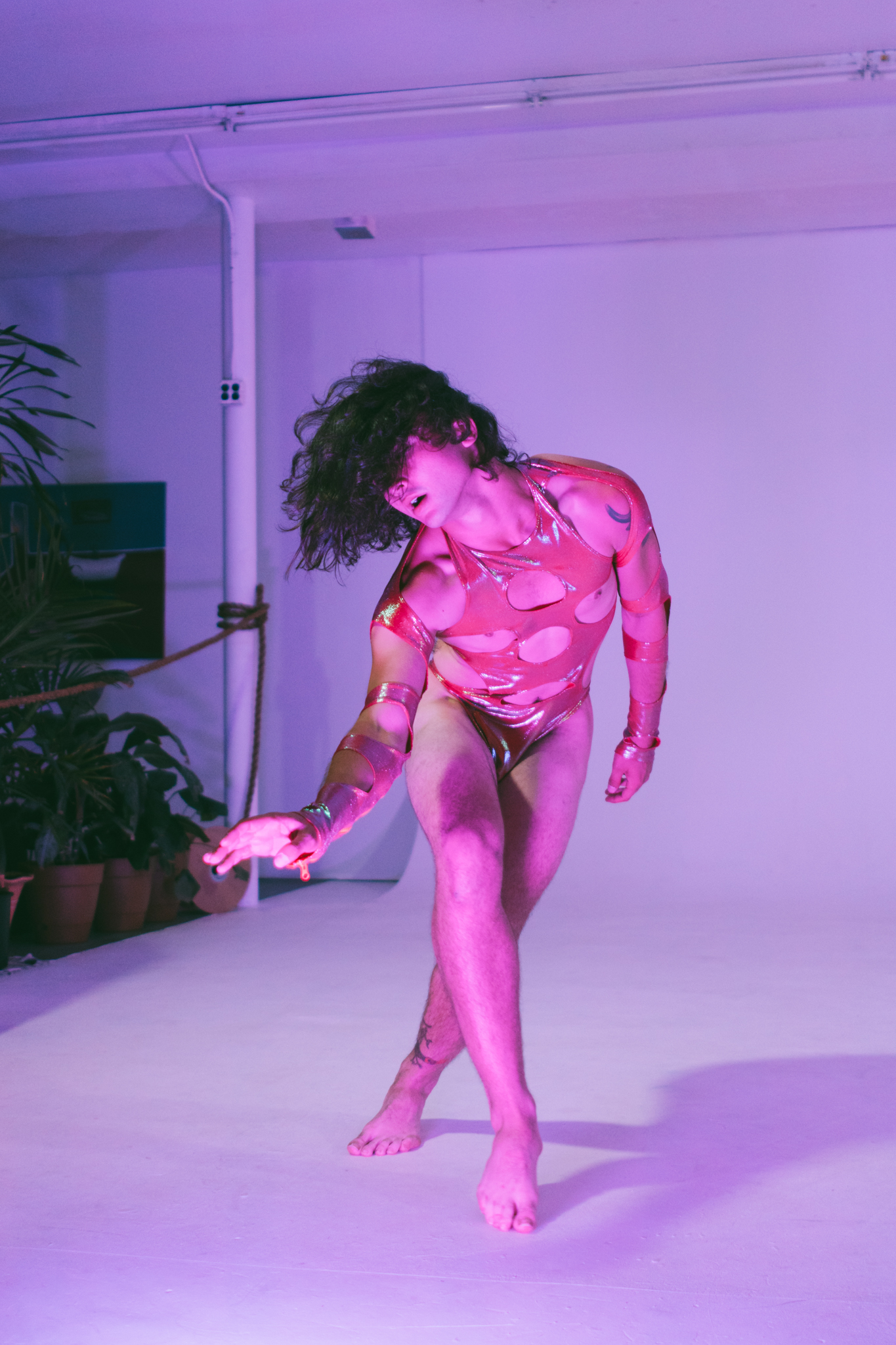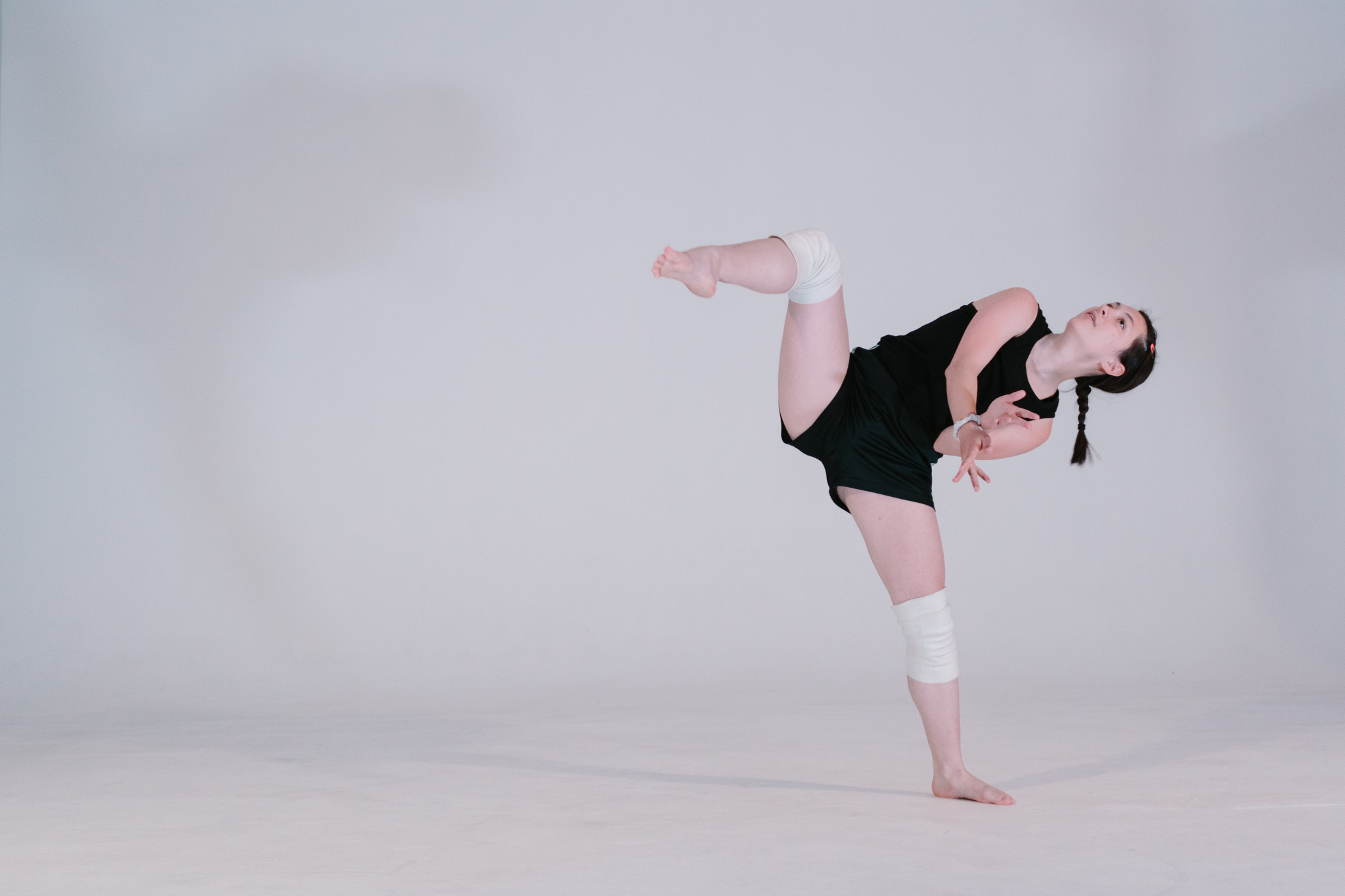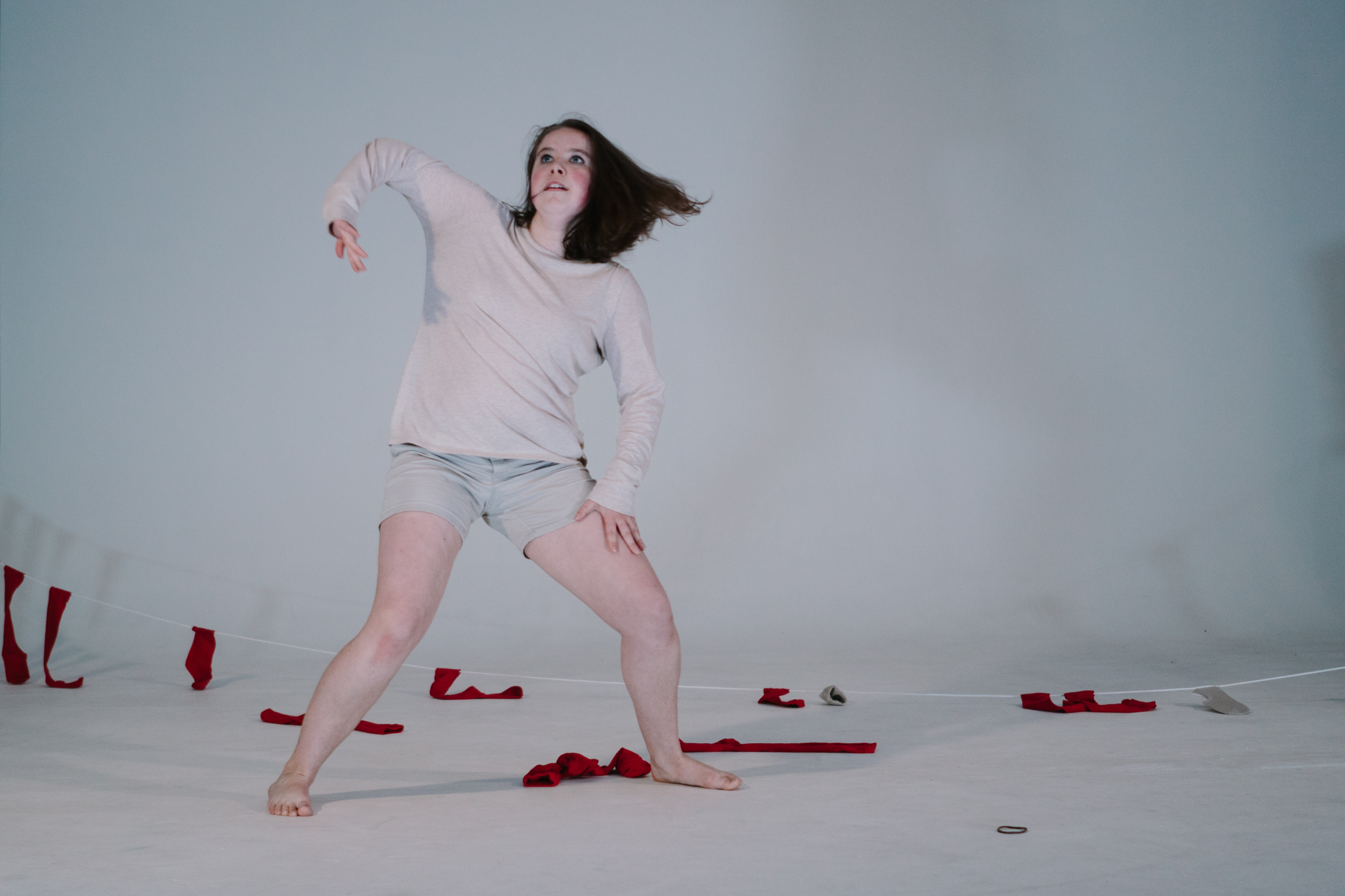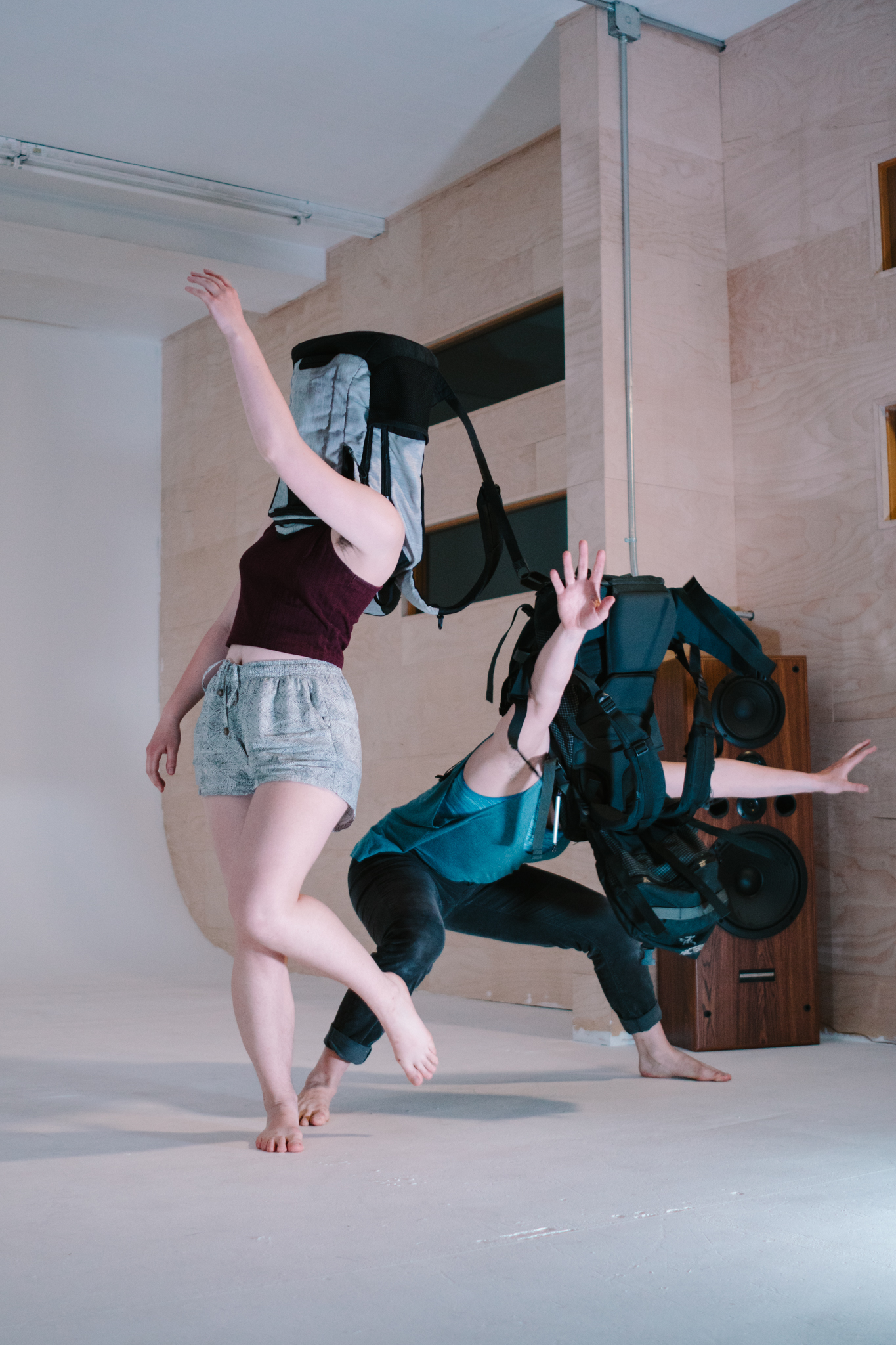Bookended by a keynote that began at 1:30 p.m. and a post-show discussion that ended at 9:30 p.m., the festival was a mosaic of propositions, images, and questions. Alexandra Barbier’s opening lecture beautifully traced the contours of queer theory, and began by asking us to move the rows of chairs we occupied into a big oval, so she could occupy its center. She spoke about how the word “queer” signals “a state of being and a way of living” that challenges “compulsory thoughts.” Barbier used Supreme Court Justice Potter Stewart’s famous line regarding obscenity and pornography - “I know it when I see it” - as a way of pointing to the contingency of “queer.” As she explained, the word exists as “an active verb, an insult, a reclaimed slur…” This porosity makes “queer” a great partner to “performance,” a word that similarly points to a way of being that can challenge or subvert dominant points of view.
Barbier suggested that queerness engages whiteness by challenging its dominant identity markers: “white,” “hetero-,” “cis-,” and “middle class.” Towards the end of her talk, Barbier theatrically unscrolled a list of 10 questions that the festival’s founders had posed to artists submitting work to be considered. It began with “What does it mean to belong?” and included “What does it mean to be you in the context of larger communities that you may or may not belong to?” and ended with “What do you long for?”
What if queerness is a challenge to any system of oppression, not only regarding gender and sexuality, but also race, class, ethnicity, and ability? As Clare Croft writes, “queer dance, at its best, is in conversation with and often in productive overlap with feminist, anti-racist, and anti-colonial artmaking, activism, and scholarship.”[1] Moments of disciplinary overlap made the strongest impression on me during the nine hours I spent at the festival. They opened up the possibilities of different attunements.
In his video “Them and Me,” Nate Francis presents himself, at first alone onscreen, wearing white shorts and wrapping red string around the skin of his torso, arms, and legs. Two more people wearing white outfits, like attendants or orderlies, join the wrapping ritual, each with a spool of white string. Over the course of the 45-minute performance, Francis is immobilized by the wrapping, the string functioning like accumulating binds that bend his body into a crouched position. When I asked him about the video, Francis shared that it was an assignment developed in a course by Kelsey Harrison at the University of Utah, where he studies sculpture and photography. Aligned with durational performances by Stelarc and by Marina Abramovic, Francis’s video uses his body to comment on societal oppressions and strictures. Although not created for the festival per se, “Them and Me” spoke to the power of art, and the importance of university courses like Harrison’s, to probe questions of identity and perceptions of our bodies.
During the post-show discussion at the festival’s end, Francis wondered about “queer” art that not only “resists” but also “celebrates” possibilities and potentialities. His words reminded me of a quote from Munoz, who defines potentiality not through a binary of actuality and potentiality, but instead: “Unlike a possibility, a thing that simply might happen, a potentiality is a certain mode of nonbeing that is eminent, a thing that is present but not actually existing in the present tense.” Performance is a generative place for opening such futurities.
In contrast to the sense of restriction generated by Francis’s video, a duet choreographed by Alexandra Barbier, for Barbier and Colleen Barnes, approached the question of queerness through potentiality: can a duet between two women who appear platonic, not romantic, be “queer”? Aptly titled “Well, is it?,” this duet featured the women in floral dresses with tulle that suggested outfits worn to a 1950s cocktail party. Barnes wore pearls. The costumes themselves were not unfamiliar for a dance performance, but coupled with the music by Arvo Pärt, there was a compelling strangeness. J. Jack Halberstam writes about “queer” as referring to “non-normative logics and organizations of community, sexual identity, embodiment, and activity in space and time.”[2] Juxtaposition of the vintage costumes and contemporary movement made me curious about the precision in the dancers’ focus and gaze. Unlike much concert dance that veers towards excess and oversaturation, there was a coolly understated quality in their performance.
Barbier’s choreography is subversively subtle and resistant. Shifting from more Apollonian qualities at the beginning, to swirling falls to the floor that suggested Dionysian rituals, the pair ended by calmly lighting their cigarettes and asking, “Well, is it?” Leaving the question unanswered let us, as their audience, fill the empty space. Was the cigarette at the end of the duet a kind of synecdoche for post-coital bliss? Is dancing ever divorced from some kind of pleasure for its artists and audiences? Refreshing in its refusal to subscribe to familiar movement vocabularies, the duet was a captivating blurring of full-bodied expression with quotidian gestures.
If “belonging” was a theme of the festival, “Well, is it?” signaled the importance of artists belonging-in-difference, of carving out their own definitions of “queer” rather than assimilating. The festival’s discussions were as thought-provoking as the artists’ work and one question in particular, from Samuel Hanson during a Q & A with the artists, still percolates as I write this review (this is a paraphrase): “As someone who is interested in Salt Lake City communities, I wonder what lineages, queer or otherwise, you situate yourself in and how they may be different from lineages of San Francisco or New York?"
A couple days prior to the festival, its founders appeared on KRCL’s RadioActive. Dat Nguyen spoke about obstacles he faced in his university courses: “In my dance education, identity was separate from the work, but for me identity is never removed from performance.” His words made me think of how entrenched whiteness has become in dance settings, to the point where identities, and their disproportionate access to representation, are seemingly ignored.
All movement and all performances emanate from people, contexts, and communities. Gerald Casel, in “Activating Whiteness” by Rebecca Chaleff, explains, “there is no such thing as pure movement for dancers of color… One of the assumptions that postmodern formalism arouses is that any body has the potential to be read as neutral - that there is such a thing as a universally unmarked body. As a dancer and choreographer of color, my body cannot be perceived as pure. My brown body cannot be read the same way as a white body, particularly in a white cube.”[3]
During the festival, Dat Nguyen presented a workshop called “Looking at Queer Experience Through Performative Collage.” He prefaced the lecture-demonstration with a little of his own biography (he grew up in Vietnam and moved to the States at age 19) and danced throughout his lecture, a kinetic background of fluid sequencing and refined stillnesses for his statements and insights. What if queering is resisting dominant modes of discourse or delivery?
This would explain why I was drawn to Dillbilly’s “Winged Refugee” set, with its arrangement by Dillbilly and Rhonda Kinard. They are queering a conventional concert format wherein musicians tour and sing for isolated communities, and instead are collecting stories from working class people at each place they visit, then sharing them with audiences at their next locations. In this way they are creating “a map of oral histories” that focuses on experiences of people who identify as queer, POC, non-binary, and trans. Two of the stories shared during the festival came from the Bay Area (Dillbilly is based in Oakland) and featured photos by Kinard. Their multi-sensory evocation was straightforward, compelling, and lush, with Dillbilly’s crystalline voice and Kinard’s bass guitar reverberating long after the songs ended.
In “Queer Times, Queer Assemblages,” Jasbir K. Puar addresses questions of identity and corporeality in terms of “assemblages” that “allow us to attune to intensities, emotions, energies, affectivities, textures as they inhabit events, spatiality, and corporealities. Intersectionality privileges naming, visuality, epistemology, representation, and meaning, while assemblage underscores feeling, tactility, ontology, affect, and information.”[4]
The festival’s closing conversation grappled with complexities of a “queer” festival that offers a designated space for work that wants to be seen through this lens. If there are multiple ways to define “queer,” does such a festival limit its aesthetics or representations? Artists responded by speaking of the gratitude they felt for the festival and its curation. Rhonda Kinard added, “You can’t be what you can’t see.” Others spoke to the power of creative expression that comes from a place of discomfort or dissensus.
Singer/actor/poet Alborz Ghandehari, who delivered a phenomenal poem called “A Politics of Desire,” spoke about his own performance that night which traversed scenes of the 1979 Revolution in Iran, sexual longing, living as an immigrant, and the horrors of war. Such multiplicity - or “assemblage” in Puar’s theories - resonates with a queerness that both challenges and accepts. Queer as potentiality, as the “if only” that Ghandehari translated from Persian: “I long for this, but now it cannot be.”
“If only” speaks to an idea of “queer,” as feeling or seeing “beyond the quagmire of the present,” in the words of Munoz. In Cruising Utopia, Munoz writes about the role of the arts as “identifying certain properties that can be detected in representational practices helping us to see the not-yet-conscious.”[5]
If I personally associate queerness with undermining oppressive structures, redistributing access and resources, and building power from the ground up, then I think it’s important to remember, in the words of thomas f. defrantz, “we don’t all get to be, do, or make queer. if anything, the unmet challenge for queer theory and queer dance might be an opening of access for anyone who wants to think-move queer; an allowance for more people to understand strategies of queer [black/asian/trans/aboriginal] performance on our bodies, in our imaginations, and among our friends.”[6]
[1] Queer Dance, page 3.
[2] In a Queer Time and Place, page 6.
[3] “Activating Whiteness,” page 79.
[4] “Queer Times,” page 128.
[5] Cruising Utopia, page 3.
[6] Queer Dance, page 179.







